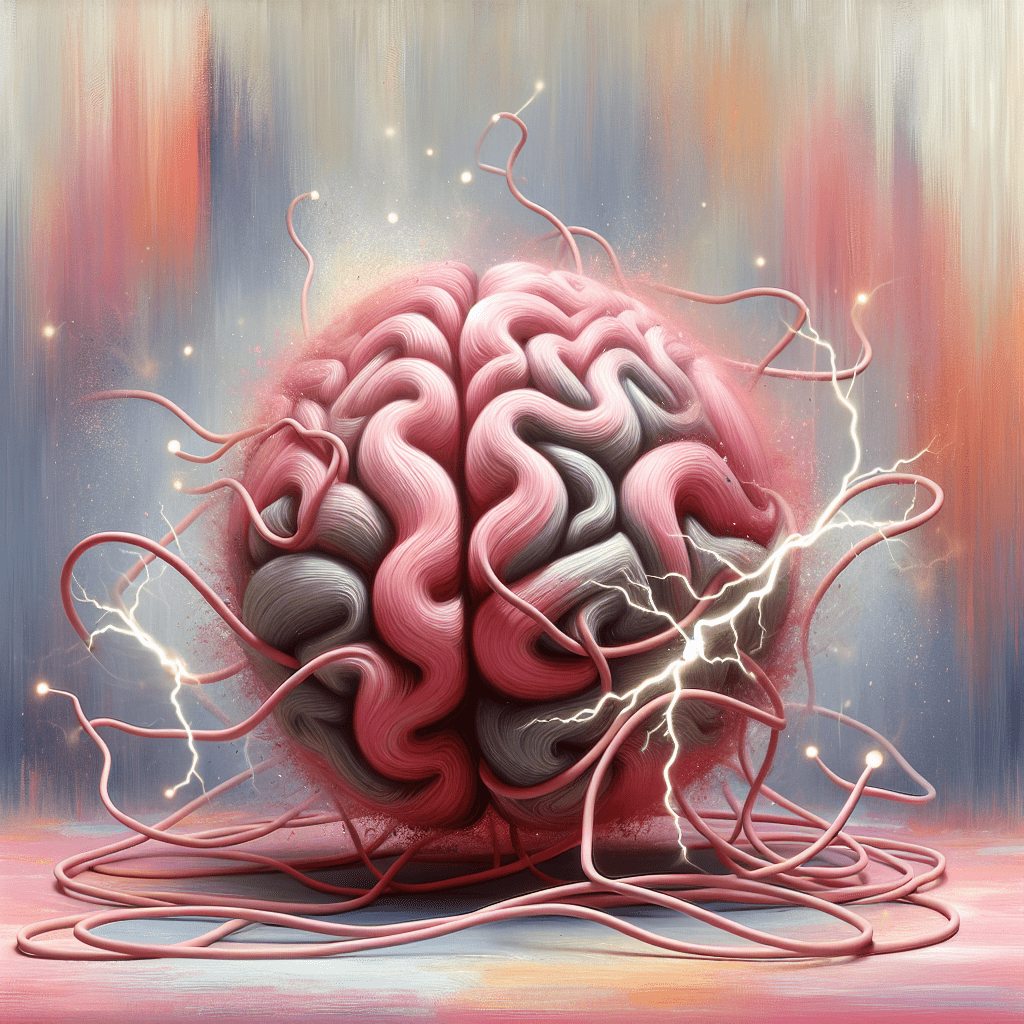Introduction: The Unseen Interference of Pain
Imagine you’re in the kitchen, juggling the morning grind of brewing coffee while frying eggs. Suddenly, a sharp pain shoots through your thumb after a minor burn. Distraction kicks in, and suddenly, the coffee spills, and breakfast turns into chaos. This simple mishap illustrates the disruptive power of pain on our **cognitive abilities** — and it’s far more profound than just a spilled cup or burnt toast. The research paper, “The Disruptive Effects of Pain on Complex Cognitive Performance and Executive Control”, seeks to demystify how pain influences our mental faculties. In our daily lives, pain is an unwelcome guest that can warp our ability to concentrate, handle multiple tasks, and switch between them effectively. By delving into this study, we unlock insights into pain’s multifaceted impact on our cognitive processes, revealing how even mild discomfort can silently undermine our mental prowess. So, what exactly happens to our brain’s gears when pain strikes?
Key Findings: When Pain Takes Center Stage
This intriguing research explored how pain affects our **executive control**, the mental systems responsible for multitasking and decision-making. Sixty-two participants engaged in two computer-based tasks designed to simulate real-life complexities: a breakfast-making task and a word generation puzzle. Half of these individuals felt the heat — literally — as they completed the tasks under conditions of thermal heat pain, while the rest enjoyed a painless environment. The findings were notable. Although pain did not seem to compromise the core performance of these tasks, it threw a wrench into multitasking abilities during the breakfast simulation.
A participant, for instance, might handle cooking eggs and pouring juice smoothly without pain. Add pain, and they struggle — not dropping the egg, but neglecting the juice to avoid the discomfort. Interestingly, with the word puzzle, while the scores remained unaffected, participants reported altered mental strategies and perceptions, such as feeling time pressure or difficulty switching between different word associations. These insights unveil that while we might seem unaffected by pain on the surface — still managing to deliver that presentation or solve that crossword — underneath, pain gnaws at our efficiency, morphing how we tackle tasks.
Critical Discussion: Peeling Back the Layers of Pain’s Impact
So, why does pain possess such an insidious grip? The complexity lies in the way our brain processes pain alongside other cognitive demands. Unlike the instantaneous effect a sharp jab of pain might have on a simple reflex, the impact on **higher-order cognitive functions** unfolds subtly. Past research has painted a blurry picture, often noting that pain diverts attention but failing to detail the nuanced interferences in complex task management. This study fills a critical gap, illustrating that while pain doesn’t devastate our cognitive framework outright, it stealthily nudges our mental focus off course.
Consider the mechanism of **executive control** functions like goal planning and task switching. Under normal circumstances, these processes flow like a well-rehearsed orchestra. Introduce pain, and it’s as if a rogue violinist starts playing an off-key note. The dissonance — subtle yet significant — affects our cognitive harmony. Importantly, the study also highlights a gender nuance: females in the sample tended to report experiencing more interference than their male counterparts. This aligns with previous findings suggesting that biological and social factors might modulate pain perception and cognitive distraction. The discussion circles back to a fundamental truth — pain’s interference is not one-size-fits-all; it’s a complex dialogue between our body, mind, and environment.
Real-World Applications: Turning Pain Into Insight
The revelations from this research have far-reaching implications beyond the laboratory. In workplaces, understanding the **disruptive effects of pain on complex cognitive performance** can inform better support systems for employees. For example, providing ergonomic workspaces or timely breaks might mitigate pain, enhancing productivity and mental clarity. In educational settings, educators can develop tailored instructional methods that accommodate students experiencing discomfort by integrating sensory-friendly classrooms.
On the personal front, pain-aware strategies can enhance self-management during daily tasks. Imagine approaching a challenging project: rather than powering through discomfort, one might allocate tasks to pain-free moments or seek restorative routines to maintain mental sharpness. In relationships, increasing awareness that pain affects thinking can deepen empathy, improving emotional support for partners dealing with chronic pain, and fostering patience during heated arguments or miscommunications. By transforming our understanding of pain’s subtle impact, we equip ourselves with the tools to navigate it more effectively, fostering environments where we, and our loved ones, can function optimally despite life’s inevitable discomforts.
Conclusion: Pain’s Silent Dialogue with the Mind
The study, “The Disruptive Effects of Pain on Complex Cognitive Performance and Executive Control”, challenges us to look beyond the obvious, recognizing that pain’s interference is often a silent conversation with our minds. It prods us to rethink how we address discomfort in various life arenas — from the office meeting rooms to our kitchen counters. By acknowledging pain’s covert influences, we empower ourselves to craft strategies that not only manage pain but optimize our cognitive performance despite it. The next time pain nudges your concentration, will you heed its subtle messages and adapt, or allow it to covertly command your mental orchestra?
Data in this article is provided by PLOS.
Related Articles
- Cracking the Genetic Code of ADHD: Insights from the DRD4 Gene
- Bridging the Mind: Exploring Functional Connectivity in ADHD Children
- Decoding Little Minds: Understanding Attention in 5-Year-Olds
- Harnessing Hope: The Transformative Power of Optimism and Resilience in Burn Recovery
- Unlocking Potential: The Power of Non-Specialist Psychosocial Interventions for Children with Developmental Challenges
- Decoding the Architecture of Thought: How Our Brains Shape Our Cognitive Styles
- Understanding Emotional Waves: Linking Heart Rhythms to Daily Mood Swings
- Unlocking the Secrets of our Brain: How Brain Waves Could Predict BCI Literacy
- Navigating the Neural Pathways: A New Chapter in ADHD Diagnosis
